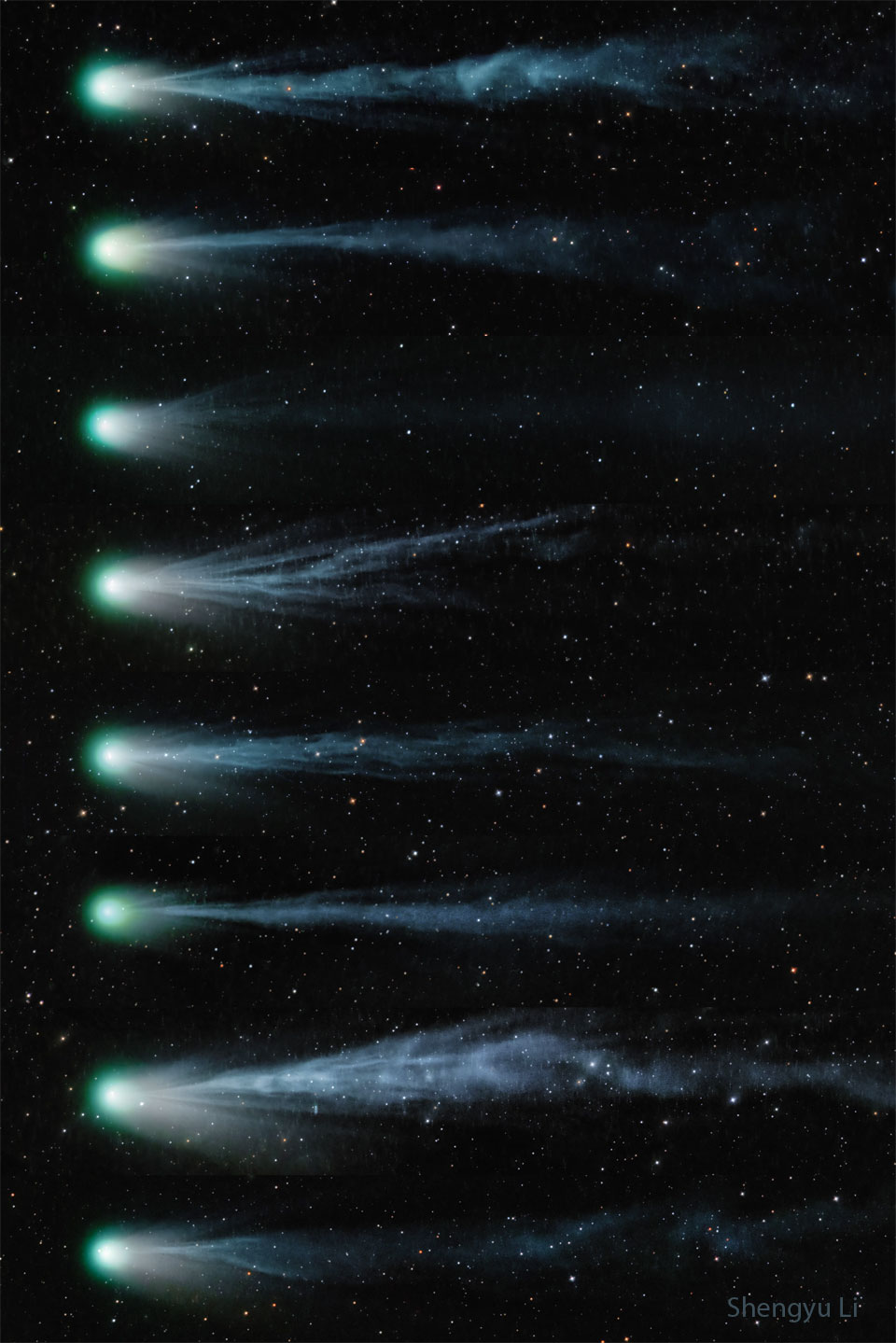2024年4月8日
The Changing Ion Tail of Comet Pons-Brooks
Image Credit & Copyright: Shengyu Li & Shaining
Explanation: How does a comet tail change? It depends on the comet. The ion tail of Comet 12P/Pons–Brooks has been changing markedly, as detailed in the featured image sequenced over nine days from March 6 to 14 (top to bottom). On some days, the comet’s ion tail was relatively long and complex, but not every day. Reasons for tail changes include the rate of ejection of material from the comet’s nucleus, the strength and complexity of the passing solar wind, and the rotation rate of the comet. Over the course of a week, apparent changes even include a change of perspective from the Earth. In general, a comet’s ion tail will point away from the Sun, as gas expelled is pushed out by the Sun’s wind. Today, Pons-Brooks may become a rare comet suddenly visible in the middle of the day for those able to see the Sun totally eclipsed by the Moon.
NASA Coverage: Today’s Total Solar Eclipse
Total Eclipse Imagery: Notable Submissions to APOD
Tomorrow’s picture: yesterday’s eclipse
庞士-布鲁克斯彗星多变的离子尾
影像提供与版权: Shengyu Li & Shaining
说明: 彗星的彗尾会如何变化?这会因彗星而异。如这幅摄于3月6日至14日(由上到下)9天期间的细致主题影像序列所示,彗星12P/庞士-布鲁克斯的离子尾展现出剧烈的变化。在某些天,彗星的离子尾相对较长、结构复杂,但并非每天如此,而且变化也通常不会持续。会造成彗尾变化的原因,包括彗核喷发物质的速率、路过的太阳风之强度和复杂性,以及彗星的自转速率。在一周之中,彗尾视觉上的变化,还包括因地球的视角改变所造成的变化。一般而言,因彗星排放的气体受到太阳风的推送,其离子尾会指离太阳。今天,对于那些能够看见太阳被月球完全遮掩的人们来说,庞士-布鲁克斯彗星或许有机会成为突然在中午现身的罕见彗星。
NASA报道: 今天的日全食
日全食图像: 向APOD提交的值得注意的影像
明日的图片: yesterday’s eclipse




Pingback: 彗星、行星与月亮 – NASA中文
Pingback: 全食日与彗星 – NASA中文
Pingback: 美国怀俄明州上空的日全食 – NASA中文